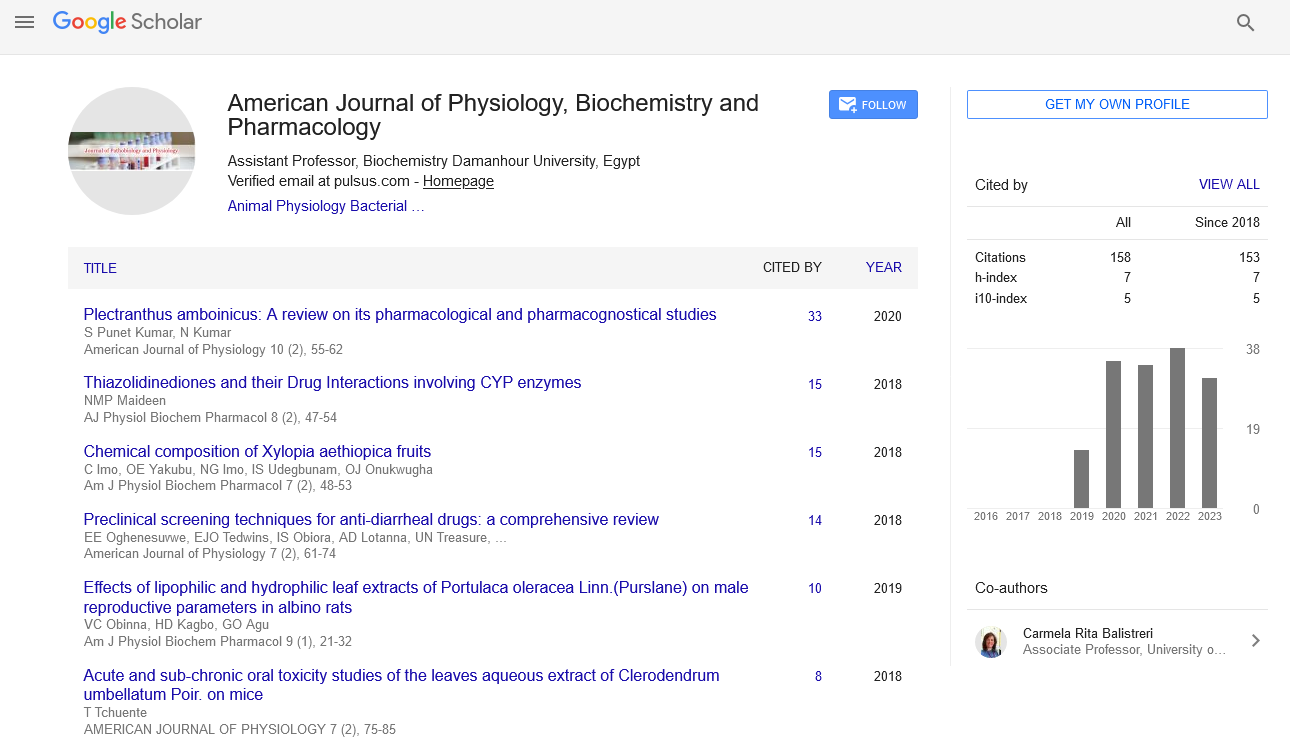Perspective - American Journal of Physiology, Biochemistry and Pharmacology (2022)
Significances of Organ Physiology and its Types
Wenzong Zhao*Wenzong Zhao, Department of Pharmacology, Minzu University, Beijing, China, Email: wenzong@gmail.com
Received: 01-Nov-2022, Manuscript No. AJPBP-22-81954; Editor assigned: 04-Nov-2022, Pre QC No. AJPBP-22-81954 (PQ); Reviewed: 18-Nov-2022, QC No. AJPBP-22-81954; Revised: 23-Nov-2022, Manuscript No. AJPBP-22-81954 (R); Published: 30-Nov-2022
Description
Physiology is the scientific study of how a biological organism works and how its mechanisms work. It is a branch of biology that focuses on how animals, organ systems, specific organs, cells, and biomolecules perform the chemical and physical processes necessary for a living system to function. The field can be separated into organ physiology, medical physiology, animal physiology, plant physiology, cell physiology, and comparative physiology in accordance with the types of organisms. The study of life is called physiology. It is the area of biology that seeks to comprehend how living things function, from the ionic and molecular underpinnings of cell activity to the integrated behaviour of entire body and impact of the environment.
Organ physiology includes studies of the heart and circulatory system that are researched in terms of their overall function in relation to cellular and molecular biological changes. The regulation of healthy, intact organs as well as pathological processes are the main areas of focus, are such as when they occur in conjunction with cardio and cerebral infarction. The study of physiology focuses on how the human body functions works normally. These brief explanations should have made it clear how each physiological system contributes to the accomplishment of various bodily functions. But it’s crucial to bear in mind that each system relies on the others to keep you alive. The regular physiology is thrown off when we get sick or hurt.
The cardiovascular system, digestive system, endocrine system, and Immune system are the physiological organ systems that make up physiology.
Cardiovascular system
All of the body’s cells receive nutrition and oxygen through the cardiovascular system, which circulates blood and removing waste materials. It is made up of blood veins that run throughout the body and the heart. Blood is transported from the heart via the arteries and returned by the veins. The heart and several blood vessels make up of cardiovascular system.
Digestive system
The stomach and intestines are two of the several organs in the digestive system that convert food you eat into nutrients your body can need. The mouth, pharynx (throat), oesophagus, stomach, small intestine, large intestine, rectum, and anus are all parts of the digestive system. Salivary glands, the liver, gallbladder, and the pancreas are also included since they produce digestive juices and enzymes that aid the body in breaking down food and liquids.
Endocrine system
The body’s as many glands that release hormone like substances make up the endocrine system. The endocrine system’s function is to control the body’s internal environment by including growth and metabolism. An intricate system of glands and organs makes up the endocrine system. The body’s metabolism, energy level, reproduction, growth and development, that response to injury, stress, and mood are all regulated and coordinated by hormones. The endocrine system is made up of the following components like Hypothalamus.
Immune system
Immune system is a complex system is made up of numerous organs, white blood cells, proteins (antibodies), and chemicals. Together, these components of body’s defence system that against external invaders like bacteria, viruses, parasites, and fungus that might infect you and lead to disease. The body’s immune system is made up of a number of defence mechanisms that guard it against pathogens and outside invaders.
Copyright: © 2022 The Authors. This is an open access article under the terms of the Creative Commons Attribution NonCommercial ShareAlike 4.0 (https://creativecommons.org/licenses/by-nc-sa/4.0/). This is an open access article distributed under the terms of the Creative Commons Attribution License, which permits unrestricted use, distribution, and reproduction in any medium, provided the original work is properly cited.






